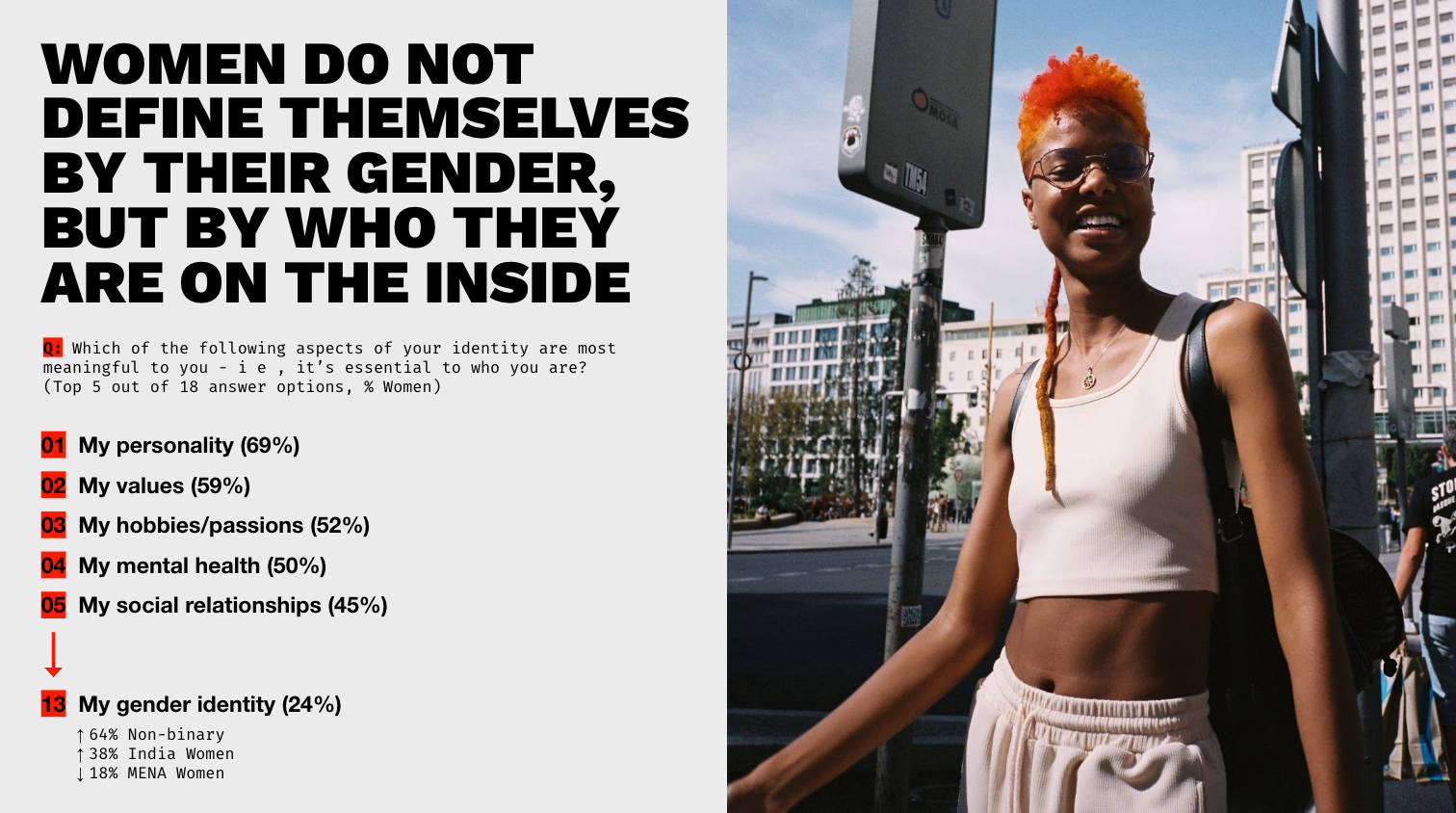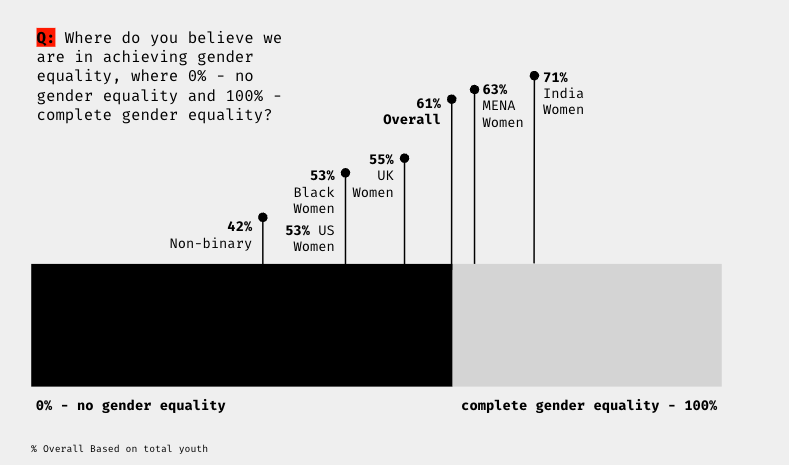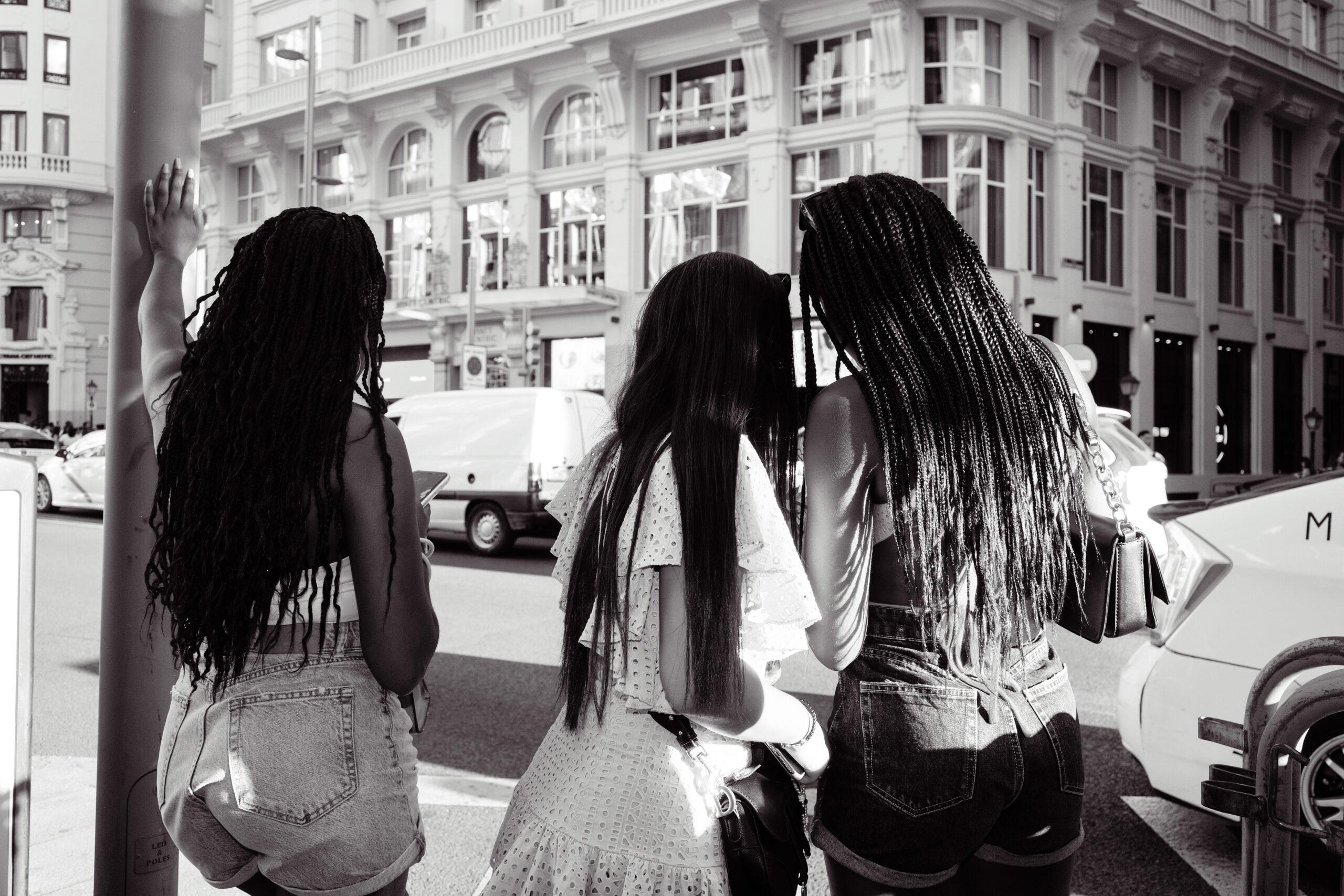VICE insights – the research arm of VICE Media Group – surveyed our 40,000 VICE Voices community in honour of Women’s History Month, to dive into the complexity of womanhood and bring the voices of our community forward.
This is what we learnt.
‘WOMANHOOD’ IS NO LONGER AS CLEAR CUT
Ask my dad, and it’s pretty clear – ‘male’ and ‘female’ or ‘man’ and ‘woman’ are the two categories of sexes assigned at birth. But the world is changing, and unless you live under a rock, you probably didn’t miss the furore JK Rowling ignited in her support of researcher Maya Forstater, or the ongoing debate that rages around whether women’s rights are being eroded as we push the legal definition of sex, gender and identity.
The VICE audience has begun expanding the definitions of gender to be more inclusive: while 54% declare a woman is deemed by physicality or birth, another 53% believe that being a woman is entirely a choice. Only 24% of the women we spoke to said their gender identity is essential to how they define themselves, coming in just 13th after elements such as personality, values, hobbies and relationships on the list below:

In the VICE Guide to Culture, we look to a future where identity is entirely untethered from human constructs, boundaries or geographies. Male/female identification within digital-first worlds matters even less as we effortlessly morph between constructs: avatars, assets and even vibes, utterly untethered from normative human constructs such as race and gender.
CHARACTERISTICS ARE NOT EXCLUSIVE
Characteristics and traits long associated with males, such as confidence and strength, are also inherent to women, with 63% of women in our study agreeing that their number one defining characteristic is ‘strength’.
While this trait can still be associated with being physically strong, the idea of strength within society has broadened beyond physical strength and morphed into new associations, whether that’s the strength of vulnerability, of character (love, kindness, empathy, hope, authenticity) or growing generational strengths within domains such as creativity for Gen Z. This in turn has allowed women to identify with a new lexicon of strength and to give praise to these broader manifestations.
YET, WE’RE FAILING TO BREAK STEREOTYPES OF “WOMEN”
Gender stereotyping and norms are still a thing – at least according to our audience. Half of the young people we surveyed believe someone’s social standing is primarily based on their gender identity. And we have a long road ahead of us to reach complete gender equality, with respondents estimating we’re only 61% of the way there.

Despite youth’s growing refusal of gender binaries and a general acceptance that characteristics associated with women, such as domesticity, submissiveness and passiveness, are from a bygone era, our audience still felt that society most expected women to possess traits such as beauty/attractiveness, the caretaker role, modesty and compassion. They noted that women were least expected to possess intuition, resilience, leadership, rationality and influence versus male counterparts.
CULTURALLY WE’RE TAKING A STEP BACK
Even more worrying are the fundamental shifts backwards for women’s rights across cultures, with 22% of the women we talked to feeling their rights and liberties are worsening.
In the US, women’s constitutional right to seek safe abortion care was revoked on June 14th, 2022. Writer Daisy Robinton puts forth her POV in Fast Company that women have poorer outcomes than men across many facets of our healthcare system because we do not give as many resources to study female physiology as men. Even as recently as 2018 she noted, we can see evidence of this bias, with only 15% of the NIH budget allocated to all women’s health.
Since seizing Kabul in 2021, notes Mohammed Rasool for VICE, the Taliban has cracked down on education for girls, practically banning girls in Afghanistan from attending high school and university.
The far-aching implications of global cultural and systems bias have yet to be seen, particularly for those already marginalised and without access to resources.
THE TRICKLE EFFECT WILL BE DISPROPORTIONATE
Revoking women’s rights will set many others back, especially those already disproportionately stereotyped. Forty-eight percent of our audience believe that to achieve gender equality, we must consider intersectionality and prioritise the issues disproportionately faced by certain groups of women (e.g., women of colour, women from a lower socio-economic background, etc.) and those faced by gender identities other than men/women (e.g., transgender community, queer community, etc.). Ninety-four percent recognize that non-binary folks experience significant discrimination and are stereotyped much more than women and men.
BRANDS NEED TO BE PART OF THE CURE
Thirty-two percent of our audience want companies and brands to play a role in gender equality. In reality, many companies fall short. Companies continue to pay female employees less than men. As Forbes noted in their gender pay gap statistics report, women in 2022 still earned 17% less than men on average. And a 20-year-old woman just starting full-time, year-round work stands to lose $407,760 over a 40-year career compared to her male counterpart. Companies still have more men in the C-suite, with only 8.8% of Fortune 500 CEOs being women.
Outside of pay inequity, there’s discriminatory parental leave, childcare support, education access, and appropriate healthcare. The list continues. The fight becomes even greater if we take a more intersectional view and a broader definition of womanhood.
It’s time to reckon with modern womanhood and our roles as people and companies in levelling the playing field for all. After all, a wound on equality is a wound in society.
To get in touch, email us at insights@vice.com



